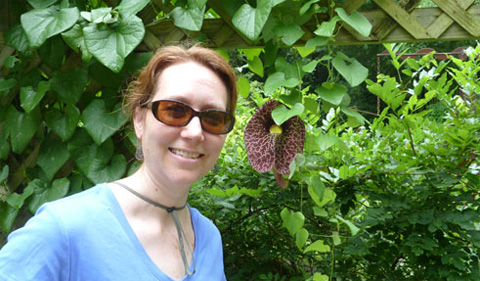
Dr. Elizabeth Hermsen
Dr. Elizabeth Hermsen, Assistant Professor of Environmental & Plant Biology, presented a talk on “Progress and pitfalls in understanding the fossil record of the water clover family (Marsileaceae)” at the 34th Midcontinent Paleobotanical Colloquium at the University of Michigan May 12-14.
Abstract: The majority of the fossil record of Marsileaceae (and closely affiliated plants) consists of abundant dispersed spores, whereas the fossil sporophyte record has bedeviled investigators for over a century. A review of the currently accepted sporophyte record and the history of studies on fossil Marsileaceae indicates that fossil sporophytes are rare and continue to be confused with structures produced by unrelated taxa. The Mesozoic sporophyte record includes about eleven genera—nine fossil genera as well as fossils assigned to the extant genera Marsilea and Regnellidium—and nearly 20 named species, as well as additional morphotypes and reports. Much of the putative sporophyte material from the Mesozoic is assigned to Marsileaceae primarily on the basis of leaf architecture or the anatomy of vegetative organs. Of Mesozoic marsileaceous sporophyte forms, three fossil genera have architecture that excludes them from Marsileaceae, and an additional two fossil genera may be synonyms. Plants that can plausibly be assigned to extant Marsilea and Regnellidium on the basis of leaf architecture were present prior to the end of the Mesozoic, in sediments of Campanian to Maastrichtian age; the sporophyte record of the family in the Cenozoic includes a few occurrences of Marsilea and Regnellidium in the Eocene. While important new fossil Marsileaceae have been reported in recent years, significant obstacles remain to using the fossil sporophyte record to make inferences about the morphological and biogeographic evolution of the family. These include inflation of the record due to misinterpretation of diagnostic features for Marsileaceae; the overall sparseness of the sporophyte record; and the occurrence of few specimens unequivocally linking fossil marsileaceous sporophytes to the spores that they produced.



















Comments